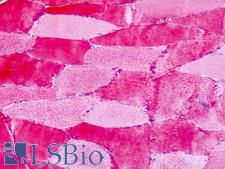Login
Registration enables users to use special features of this website, such as past
order histories, retained contact details for faster checkout, review submissions, and special promotions.
order histories, retained contact details for faster checkout, review submissions, and special promotions.
Forgot password?
Registration enables users to use special features of this website, such as past
order histories, retained contact details for faster checkout, review submissions, and special promotions.
order histories, retained contact details for faster checkout, review submissions, and special promotions.
Quick Order
Products
Antibodies
ELISA and Assay Kits
Research Areas
Infectious Disease
Resources
Purchasing
Reference Material
Contact Us
Location
Corporate Headquarters
Vector Laboratories, Inc.
6737 Mowry Ave
Newark, CA 94560
United States
Telephone Numbers
Customer Service: (800) 227-6666 / (650) 697-3600
Contact Us
Additional Contact Details
Login
Registration enables users to use special features of this website, such as past
order histories, retained contact details for faster checkout, review submissions, and special promotions.
order histories, retained contact details for faster checkout, review submissions, and special promotions.
Forgot password?
Registration enables users to use special features of this website, such as past
order histories, retained contact details for faster checkout, review submissions, and special promotions.
order histories, retained contact details for faster checkout, review submissions, and special promotions.
Quick Order
PathPlusTM GPER1 / GPR30 Antibodies
G-protein coupled estrogen receptor 1 (GPER1) promotes neuritogenesis in developing hippocampal neurons. It plays a role in acute neuroprotection against NMDA-induced excitotoxic neuronal death and increases firing activity and intracellular calcium oscillations in luteinizing hormone-releasing hormone (LHRH) neurons. GPER1 inhibits mature adipocyte differentiation and lipid accumulation, and is involved in the recruitment of beta-arrestin 2 ARRB2 at the plasma membrane in epithelial cells. It also functions as a receptor for aldosterone, mediating rapid regulation of vascular contractibility through the PI3K/ERK signaling pathway. Finally, it is implicated in cancer progression.
References: The UniProt Consortium. Nucleic Acids Res. 47: D506-515 (2019); Nucleic Acids Res. 2016 Jan 4;44(D1):D733-45, PMID:26553804
6 PathPlusTM Antibodies






☰ Filters
Products
Antibodies
(6)
Type
Primary
(6)
Target
GPER1 / GPR30
(6)
Reactivity
Human
(6)
Rat
(1)
Dog
(1)
Monkey
(2)
Application
IHC
(6)
IHC-Fr
(1)
IHC-P
(6)
WB
(4)
ELISA
(1)
ICC
(1)
IF
(4)
Host
rabbit
(6)
Product Group
Alzheimer's Disease
(6)
GPCR Database Antibodies
(6)
PathPlus Neuro
(6)
Clonality
polyclonal pc
(6)
Format
Unconjugated
(6)
Epitope
Extracellular Domain
(3)
C-Terminus
(1)
Cytoplasmic Domain
(1)
N-Terminus
(1)
Publications
Yes
(5)
No
(1)

Neuroscience
GPER1 / GPR30 Rabbit anti-Human Polyclonal (C-Terminus) Antibody
Dog, Rat, Human, Monkey
IF, IHC, IHC-Fr, IHC-P, WB
Unconjugated
50 µg/$440

Neuroscience
GPER1 / GPR30 Rabbit anti-Human Polyclonal (N-Terminus) Antibody
Human
IF, IHC, IHC-P, WB
Unconjugated
50 µg/$440

Neuroscience
GPER1 / GPR30 Rabbit anti-Human Polyclonal (Cytoplasmic Domain) Antibody
Human
ICC, IHC, IHC-P, WB
Unconjugated
50 µg/$440

Neuroscience
GPER1 / GPR30 Rabbit anti-Human Polyclonal (Extracellular Domain) Antibody
Human
IF, IHC, IHC-P
Unconjugated
50 µg/$395

Neuroscience
GPER1 / GPR30 Rabbit anti-Human Polyclonal (Extracellular Domain) Antibody
Human, Monkey
IF, IHC, IHC-P, WB
Unconjugated
50 µg/$440

Neuroscience
Fast Shipping
GPER1 / GPR30 Rabbit anti-Human Polyclonal (Extracellular Domain) Antibody
Human
ELISA, IHC, IHC-P
Unconjugated
50 µg/$395
Viewing 1-6
of 6
product results











